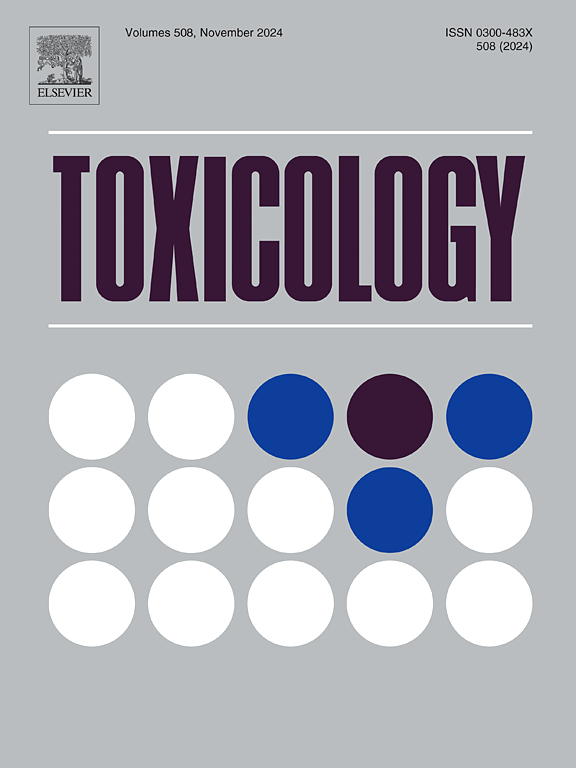巨噬细胞中聚苯乙烯微塑料的毒理学分析:微塑料暴露与免疫细胞损伤的联系。
IF 4.6
3区 医学
Q1 PHARMACOLOGY & PHARMACY
引用次数: 0
摘要
微塑料(MPs),特别是聚苯乙烯微塑料(PSMPs)的普遍存在,引起了人们对其对人类健康影响的迫切关注。本研究探讨球形PSMPs (本文章由计算机程序翻译,如有差异,请以英文原文为准。
Toxicological profiling of polystyrene microplastics in raw 264.7 macrophages: Linking microplastic exposure to immune cell impairment
The pervasive presence of microplastics (MPs), particularly polystyrene microplastics (PSMPs), has raised urgent concerns regarding their effects on human health. This study investigates the toxicological effects of spherical PSMPs (<0.50 µm) on Raw 264.7 murine macrophages, critical immune cells that actively internalize foreign materials. At exposure concentrations ranging from 50 to 500 µg/mL, PSMPs were rapidly internalized within 2 h, with accumulation increasing over time. Notably, high-dose exposure (500 µg/mL) resulted in significant mitochondrial membrane damage, lysosomal dysfunction, elevated reactive oxygen species (ROS) levels, and lipid peroxidation. These cellular stress responses were accompanied by increased levels of LDH and SOD, as well as the induction of apoptosis and cellular senescence. The findings show that PSMPs disrupt mitochondrial function and contribute to senescence responses, ultimately compromising immune cell viability and function. This study provides new insight into the intracellular fate and toxicity of environmentally relevant PSMPs and emphasizes the need for urgent evaluation of plastic pollution's impact on human health.
求助全文
通过发布文献求助,成功后即可免费获取论文全文。
去求助
来源期刊

Toxicology
医学-毒理学
CiteScore
7.80
自引率
4.40%
发文量
222
审稿时长
23 days
期刊介绍:
Toxicology is an international, peer-reviewed journal that publishes only the highest quality original scientific research and critical reviews describing hypothesis-based investigations into mechanisms of toxicity associated with exposures to xenobiotic chemicals, particularly as it relates to human health. In this respect "mechanisms" is defined on both the macro (e.g. physiological, biological, kinetic, species, sex, etc.) and molecular (genomic, transcriptomic, metabolic, etc.) scale. Emphasis is placed on findings that identify novel hazards and that can be extrapolated to exposures and mechanisms that are relevant to estimating human risk. Toxicology also publishes brief communications, personal commentaries and opinion articles, as well as concise expert reviews on contemporary topics. All research and review articles published in Toxicology are subject to rigorous peer review. Authors are asked to contact the Editor-in-Chief prior to submitting review articles or commentaries for consideration for publication in Toxicology.
 求助内容:
求助内容: 应助结果提醒方式:
应助结果提醒方式:


